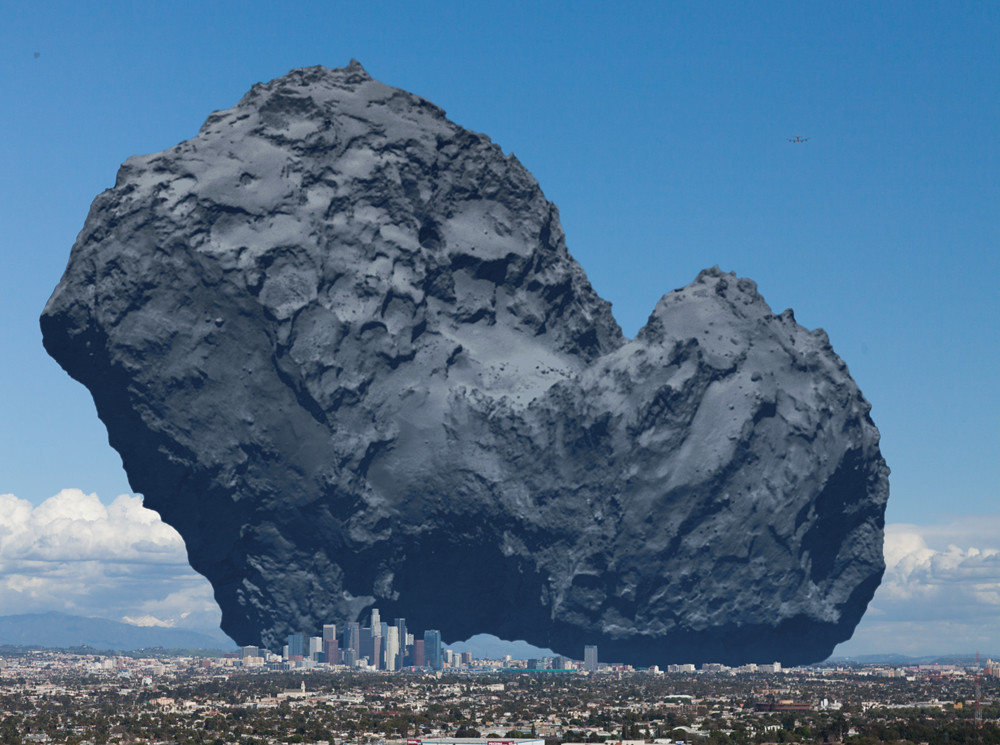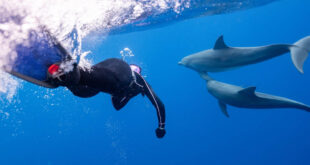If you are someone who has the fear of large objects, or get vertigo just by looking at something gigantic, then you have megalophobia. Megalophobia, or the fear of large objects, is a type of phobia that has the ability to invoke some of the deepest fears. For some, large airplanes or ships can cause their hearts to pump faster and for others, it can be gigantic buildings. Whether you are afraid of large animals, massive man-made objects like ships and blimps or stationary objects such as big sculptures and statues, or if enjoy seeing them, here are 10 incredibly massive objects in our universe that make us feel extremely small.
1. This gigantic mine called Mir mine in Russia.
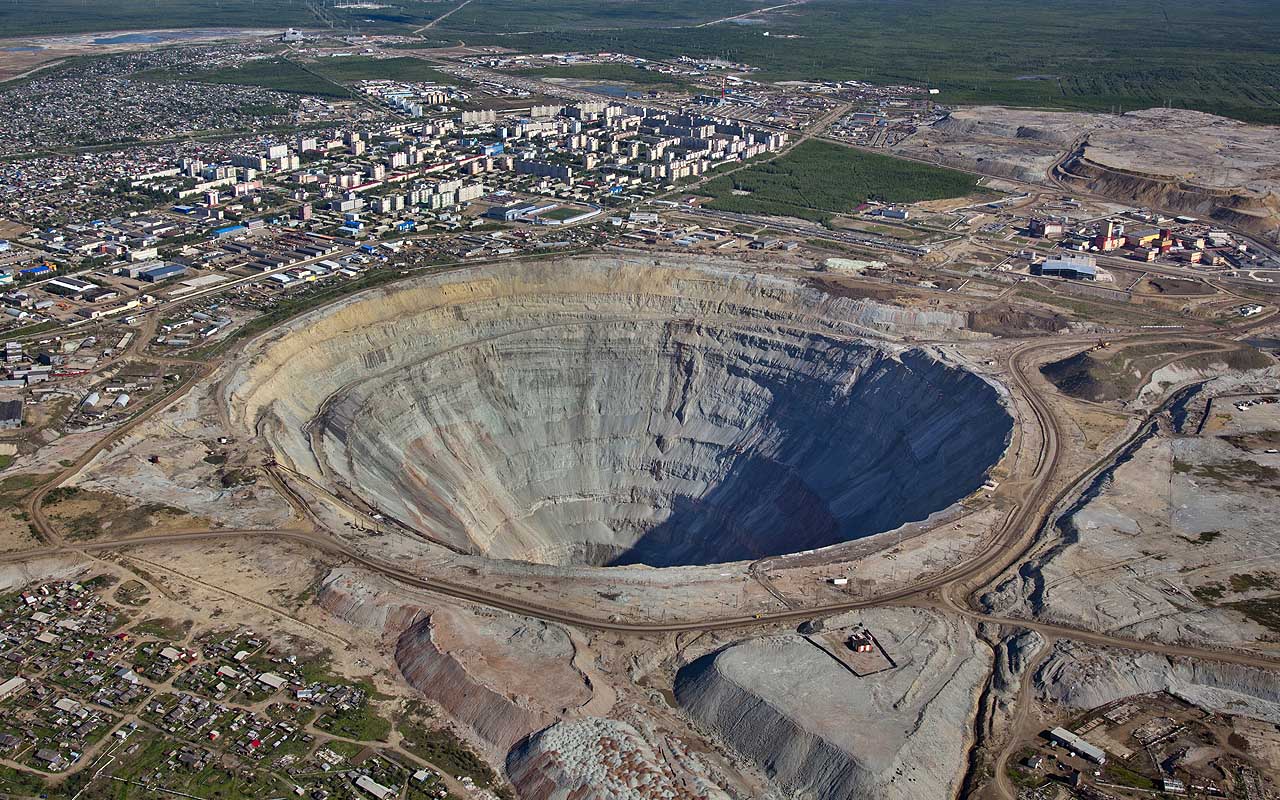
The Mir mine, also called the Mirny mine, looks like a giant sinkhole but is basically an open diamond mine. Located in Mirny, Sakha Republic, in the Siberian region of eastern Russia, the Mir mine is one of the larger man-made excavated holes in the world. Founded in 1955, the Soviet government built the mine is less than three and half years. By 1979, more than 30,000 residents built houses and started a life around the mine. Today, there are more than 37,000 people.
According to official reports, the company that manages the mine, known as Alrosa, reaped more than 10 million carats (over 4,400 pounds) worth of diamonds per year, during its peak time. Although large gems were discovered in the mine, the mining operations were ceased in 2001. However, in 2009, Alrosa commenced underground mining, which came to a halt in 2018, after the underground networks were flooded. Today, the company is taking steps to commence mining operations by 2022. The picture below will give you an idea of how big the mine actually is:

2. Gigantic driftwood that washed ashore in Washington.
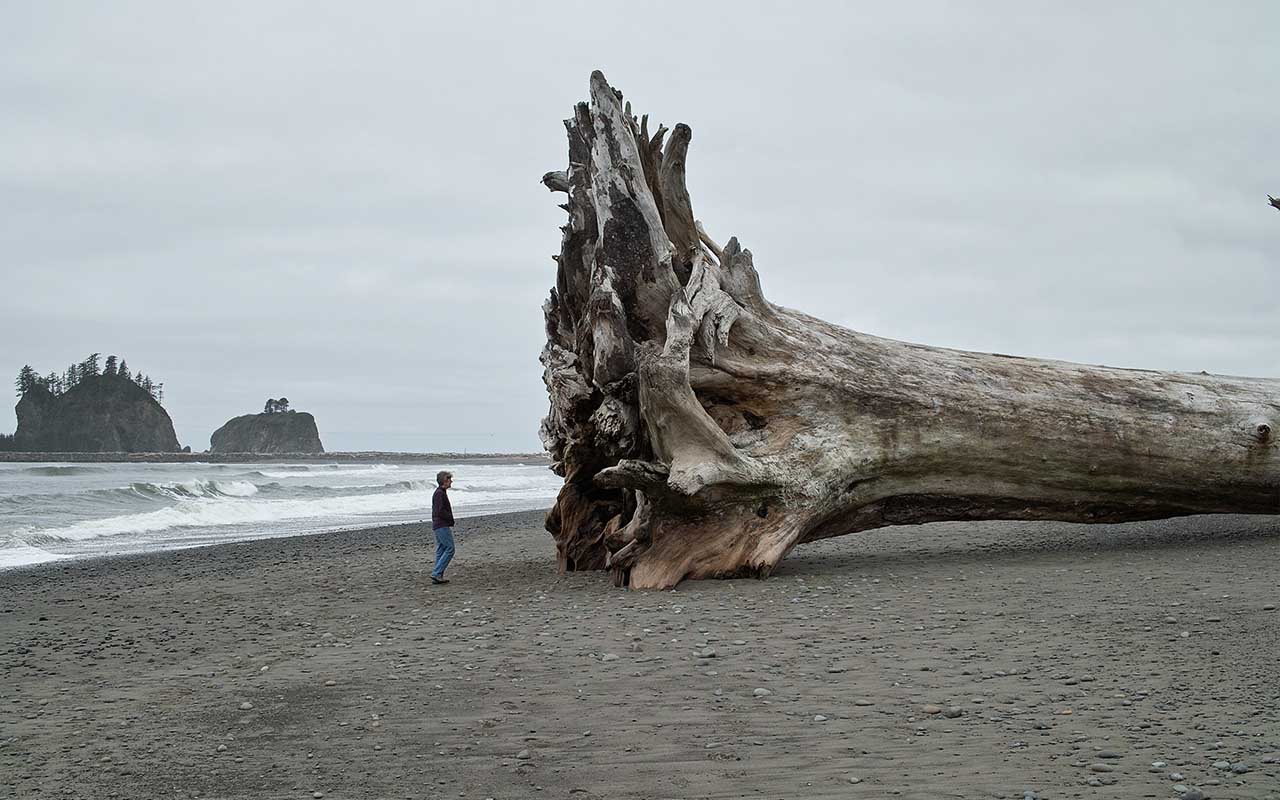
If you take a trip to the Pacific coast of the United States, in the La Push Beach in Washington, you will come across a gigantic piece of driftwood. On April 2010, the massive piece of the Sequoia Semper Virens, Costal Red Wood that only grows in Monterey California, washed up ashore the Clallam County, Washington. According to The Telegraph, the tree had to travel hundreds of miles to reach its destination and it’s not common to come across such as massive piece of driftwood. This “piece” of driftwood is actually called a drift log and powerful winds accompanied by high tides are required to bring them ashore. (source)
3. The size of Rosetta’s Comet compared to downtown LA.
In 2014, humanity successfully landed a probe on a comet. The Rosetta spacecraft, launched in 2004, followed a 10-year mission to catch and land on Comet 67P/C-G, Rosetta. Rosetta’s comet is 1.86 miles (3 km) wide and a normal person would be able to completely walk across it in less than an hour. However, when compared with the size of downtown LA, it looks pretty big. The image above is by Matt Wang, who combined a photograph of Los Angeles with an image from the Rosetta spacecraft.
As for the Rosetta spacecraft, it touched down not once but three times before coming to rest in a shadow. According to the European Space Agency (EPA), it is only receiving 1 to 2 hours of sunlight a day, rather than the expected 6 to 7 hours. This could jeopardize the future of the mission since the sunlight it receives is not enough to charge the secondary batteries. (source)
4. Ghazipur landfill in New Delhi is India’s highest rubbish mountain. It is so big that it is expected to be higher than the Taj Mahal by 2020.
India is known for its beautiful landscapes, people and monuments. India is home to seven major mountain ranges that have peaks of over 1,000 meters. But, the Ghazipur landfill in New Delhi is growing tall at such a pace that it would soon be taller than the Taj Mahal. According to the United Nations, New Delhi is one of the world’s most polluted capitals. The Indian Express explains that the landfill is bigger than 40 football pitches and is more than 65 meters (213 feet) high. At its current rate of growth, it will be taller than the iconic Taj in Agra, some 73 meters high, by 2020. (source)
5. The Gordon Dam is the tallest dam in Tasmania, Australia.
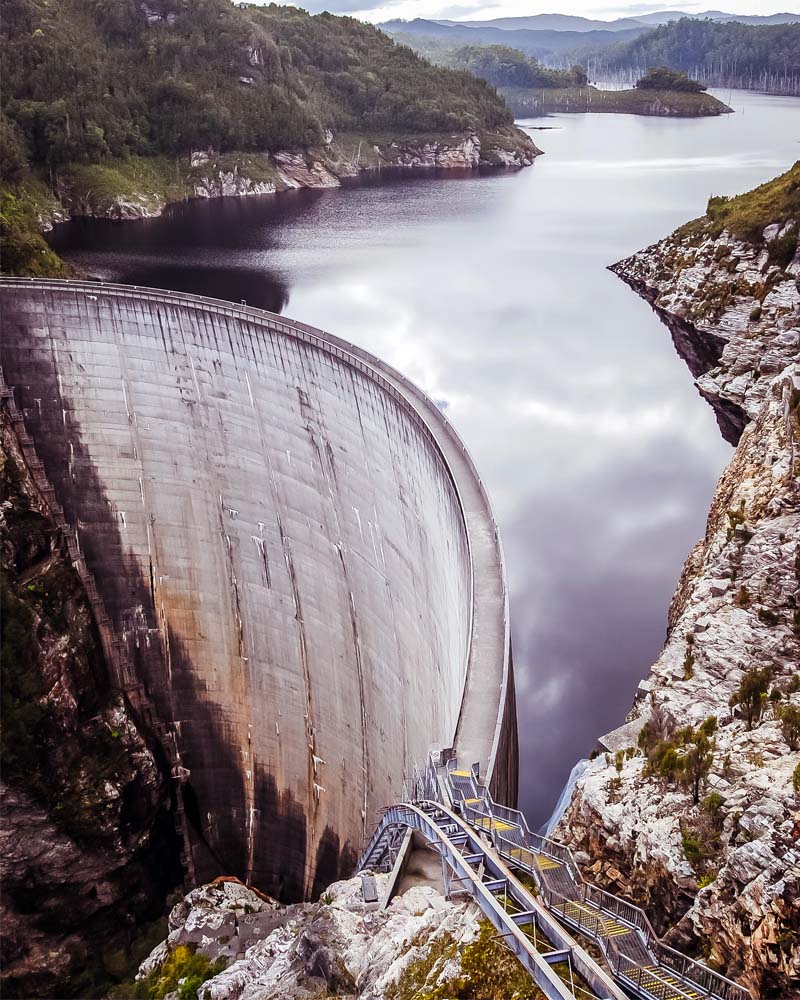
Standing over 140 meters in height, the concrete wall features an arch both horizontally and vertically, making it one of mankind’s marvelous achievements.The Gordon Dam is taller than the Sydney Harbor Bridge and the water it holds back is more than the entire Sydney Harbor. The double curvature concrete arch dam was purposely made to curve in vertical and horizontal directions to resist large hydraulic pressures coming from the 12,359,040 megaliters of water in Lake Gordon, the largest lake in Australia. The immense volume of water is diverted 183 meters to the underground power station, where three hydro turbines generate up to 432 MW of power; which is approximately 13% of Tasmania’s electricity demand. (source)
6. In case you forgot just how big the sun is and a gentle reminder as to how small we are.

From left to right: Mercury, Venus, Earth, Moon, Mars, Jupiter, Saturn, Uranus, Neptune, Pluto, Haumea, Makemake, and Eris.
Roberto Ziche, a San-Francisco based artist, created these painstakingly detailed images that represent every other interstellar object in the immediate vicinity. The scaled 3D rendering of our solar system is not only accurate, but shows us how small we really are in it. From this perspective, our home planet is barely a dot on this celestial road map. Jupiter, one of the “gas giants,” is large enough to hold 763.6 Earths. Just remember the next time you think something is “big”, from a celestial standpoint, it’s probably the size of a grain of sand. (source)
7. And here’s everything you’ve seen and see at night.

Our Sun and all the planets around it are part of a galaxy known as the Milky Way Galaxy. In simple terms, a galaxy is a large group of stars, gas, and dust, bound together by gravity. According to scientists, our galaxy is about 25,000 light years away from the center of our galaxy; which means that we are basically living in the suburbs of our galaxy. The Milky Way is about 1,000,000,000,000,000,000 km (about 100,000 light years or about 30 kpc) across. Since we are inside the Milky Way, we are unable to take pictures of it. The pictures of the Milky Way that are often taken by photographers, are pictures in which we see the structure of the Milky Way edge-on, from inside of it. The image above is an artist’s impression of the Milky Way Galaxy, as seen from above the galactic “North pole”. (source)
8. A mysterious hurricane of Saturn’s north pole is bigger than two Earths.
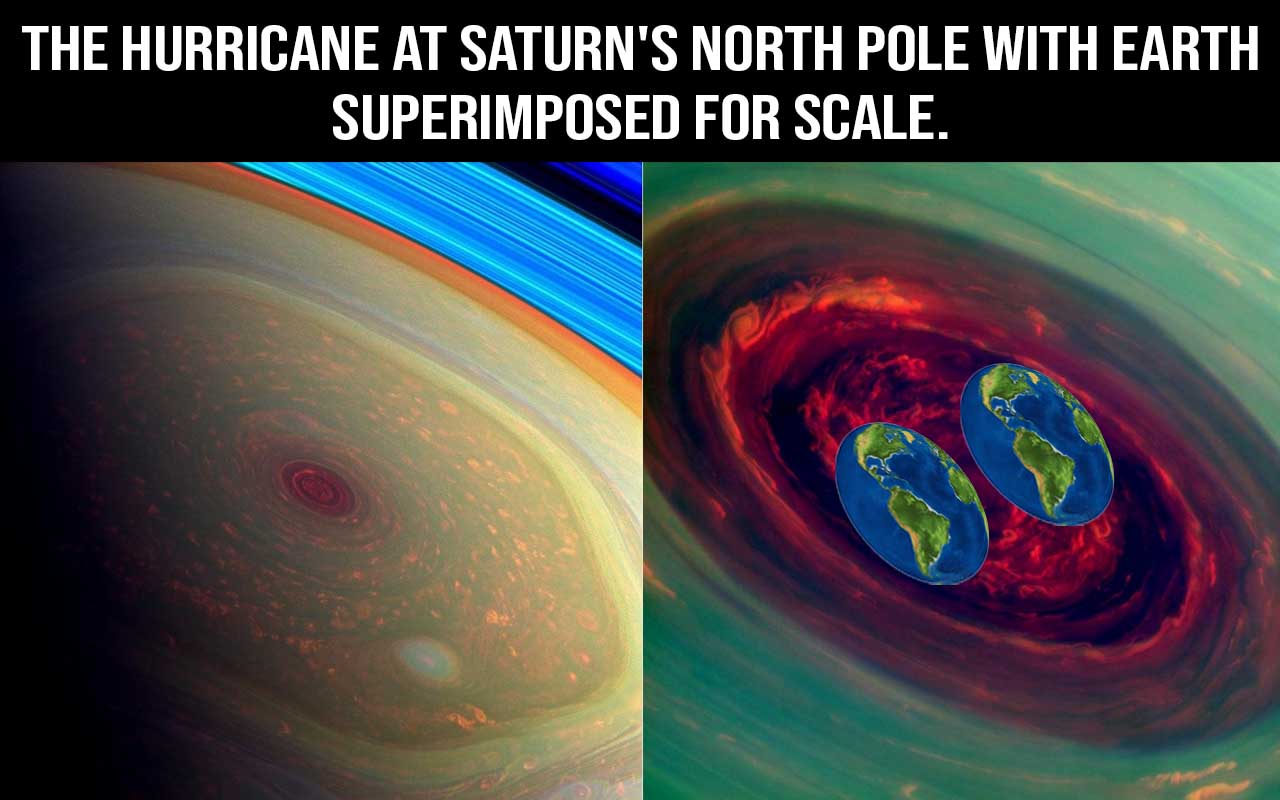
NASA’s Cassini spacecraft was launched on October 15, 1997. The spacecraft was active in space for nearly 20 years, with 13 years spent orbiting Saturn and studying the planet and its system after entering orbit on July 1, 2004. During Winter, scientists were unable to see what was going on at Saturn’s north pole, where a hexagon was observed. The wandering jet stream was bigger than two Earths, and when Spring arrived, scientists saw that the center of the hexagon was a hurricane. Known as Saturn hurricane, the winds flow more than 300 miles per hour, which is four times that of hurricanes on Earth.
Using specialized filters aboard the spacecraft, scientists were able to see that it was similar to that of Earth, but did not have any ocean beneath. Today, scientists are trying to figure out how the Saturn hurricane, which is locked to the North Pole, exists without an ocean underneath. (source)
9. Sitting on top of the Abraj Al Bait, the largest clock tower in the world. For reference, the second picture shows how tall the clock tower actually is.
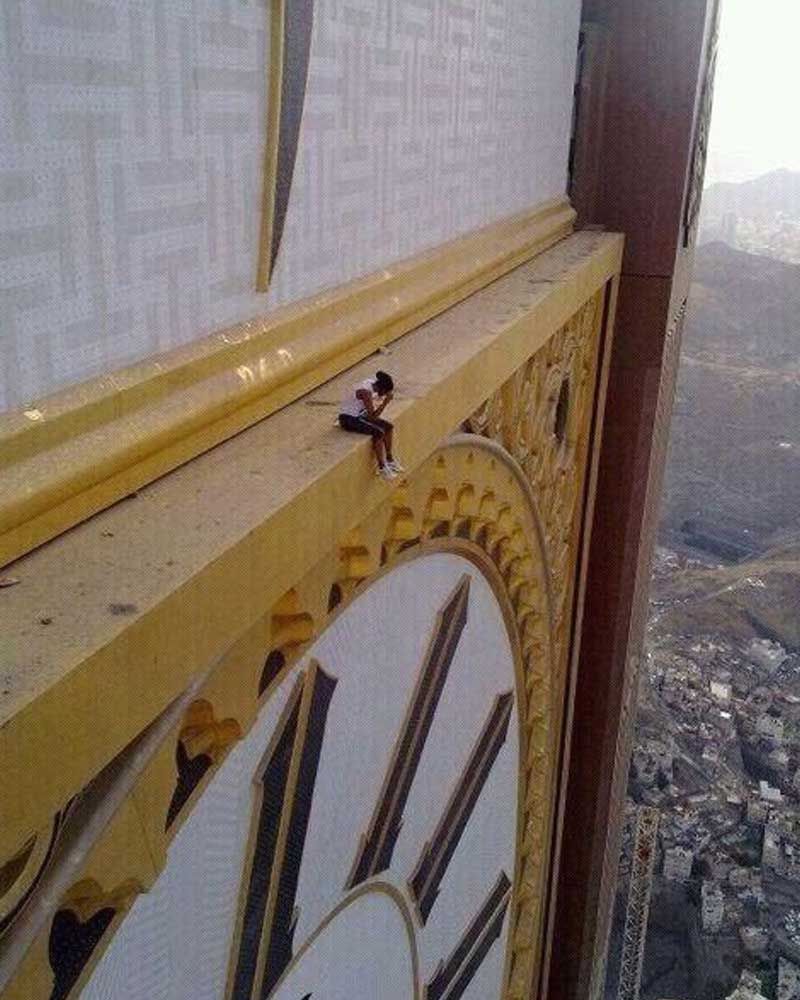
The Abraj Al Bait in Saudi Arabia is composed of 7 individual towers with different heights, aside from its clock tower. The Central Tower of the complex stands 601 meters (1972 ft) tall and has 120 floors. By 2019, the Royal Tower became the 3rd tallest building after Burj Khalifa and Shanghai Tower. The clock tower, situated in the middle of the complex, is 2 meters taller than Shenzhen’s newly-built Ping An Finance Center. The height of each of the four clocks is 46 meters, whereas, the highest habitable floor is at 450 meters.
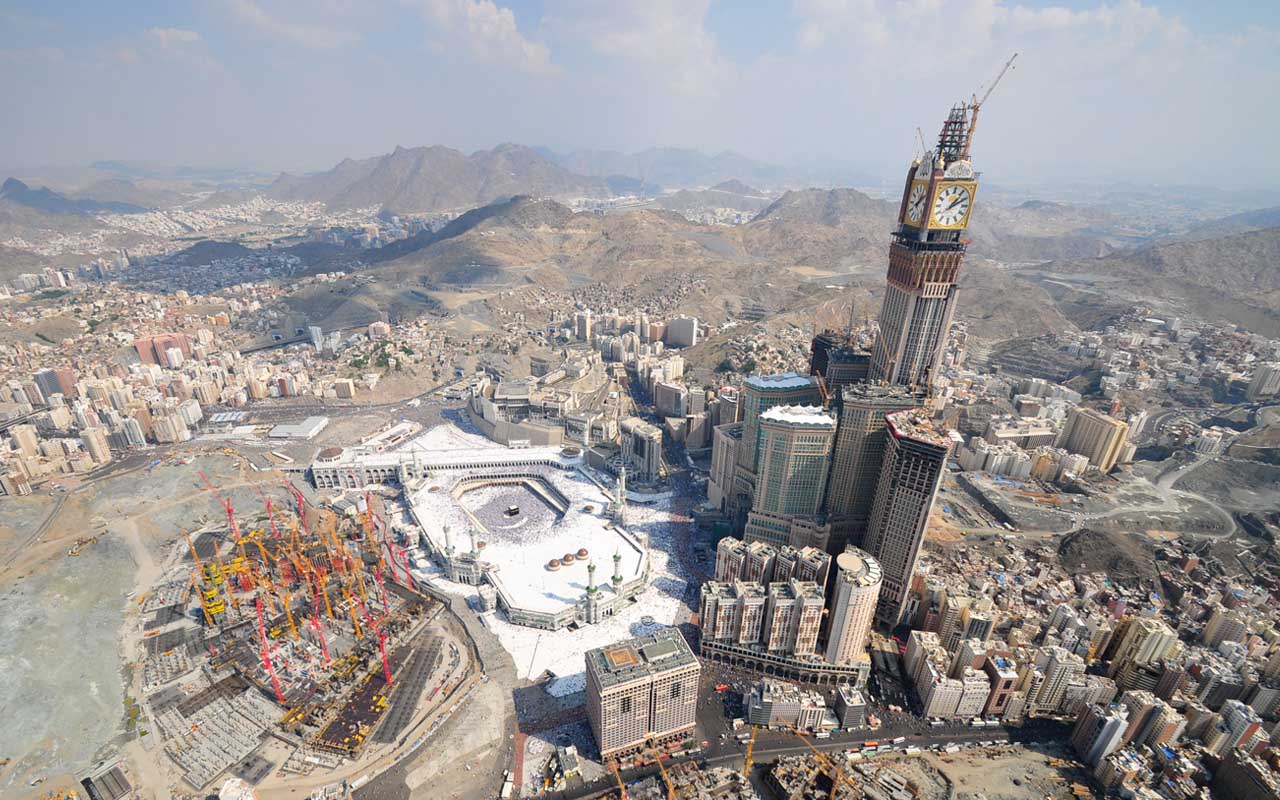
The shorter towers are over 230 meters, and the 2 beside the main tower stand 280 meters high. Abraj Al Bait also functions as a hotel, and has a shopping mall, museum, and plenty of space for other amenities.
10. The pale blue dot is actually Earth, as seen from a distance of more than 4 billion miles and about 32 degrees above the ecliptic.
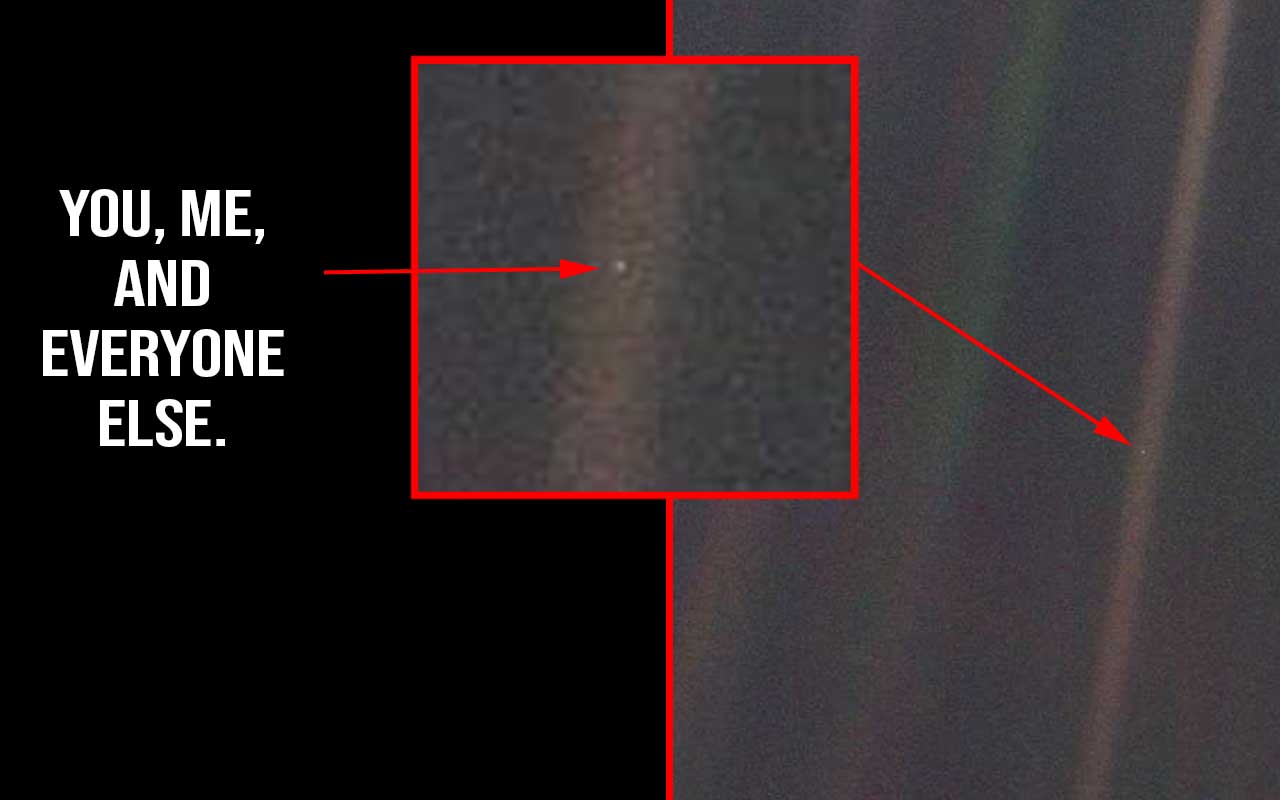
The image of the Earth, dubbed ‘Pale Blue Dot’, is part of the first ever ‘portrait’ of the solar system taken by Voyager 1. According to NASA, the spacecraft acquired a total of 60 frames for a mosaic of the solar system from a distance of more than 4 billion miles from Earth and about 32 degrees above the ecliptic.
“From Voyager’s great distance, Earth is a mere point of light, less than the size of a picture element even in the narrow-angle camera. Earth was a crescent only 0.12 pixel in size. Coincidentally, Earth lies right in the center of one of the scattered light rays resulting from taking the image so close to the sun. This image of the Earth was taken through three color filters — violet, blue and green — and recombined to produce the color image. The background features in the image are artifacts resulting from the magnification.” – NASA
Just remember: Everything we ever know and have known might seem important to us, but to the universe? We are just a tiny, tiny speck!
